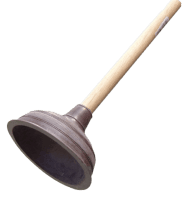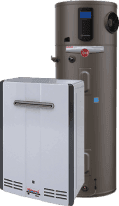
Picture this: you’re enjoying a relaxing shower after a long day, only to find yourself ankle-deep in water that won’t disappear. Or you may have noticed an unpleasant odour lingering in your bathroom, and it’s starting to raise eyebrows. These are all telltale signs that you might be dealing with a blocked drain. This common nuisance can disrupt your daily routine and even lead to costly plumbing repairs if left unattended.
In this article, we’re going to explore the causes behind blocked drains, so you’ll be better equipped to prevent blockages and ensure your drains remain free-flowing.
Understanding Drain Blockages
Basic Anatomy of a Drain System
To truly comprehend the causes of blocked drains, it’s essential to start with the basics. Drain systems are the unsung heroes of any home, diligently working behind the scenes to transport wastewater away from your sinks, showers, toilets, and appliances. These systems consist of an intricate network of pipes that should ideally allow water to flow seamlessly, but when blockages occur, this harmony is disrupted.
Let us paint you a picture.
The journey begins when water and waste are flushed or poured down the drain. These substances traverse a series of pipes, with gravity as their trusty guide, leading them away from your living spaces to the sewer or septic tank. However, when foreign materials enter this system, they can disrupt the flow, leading to blockages.
How Blockages Form Over Time
Blocked drains don’t appear out of thin air; they develop gradually over time. You might be going about your daily business, blissfully unaware that lurking beneath your feet, your trusty drains are quietly amassing a hidden menace. That menace is the dreaded blockage. But how exactly do blockages form over time?
It’s a slow-brewing disaster that’s been in the making for some time. Let’s break it down.
Step 1: The Innocent Beginnings
Blockages usually start with the everyday stuff we wash down the drain without a second thought – bits of food, soap scum, hair, and maybe even some unidentifiable gunk. At this stage, it’s all pretty harmless, taking a leisurely trip down the pipes.
Step 2: The Gathering
As time goes by, these innocent particles begin to accumulate. Like a party that gets a little out of hand, more and more debris joins in on the action. It’s a gradual process, often too slow for us to notice until it’s too late.
Step 3: The Stickiness Factor
Now, here’s where things get interesting. The various elements in the drain start to mix and mingle, creating a sticky concoction that’s hell-bent on causing trouble. Grease from your cooking endeavours, combined with soap residue and hair, forms a kind of drain slime that clings to the inner walls like a stubborn houseguest who won’t leave.
Step 4: The Clog Culprit
As the gooey amalgamation thickens, it narrows the passage for water to flow through. This is where the trouble really starts. The water encounters resistance, and some of it gets forced back up, leaving you with that ever-so-charming slow drain.
Step 5: The Final Straw
Finally, it doesn’t take much to tip the balance. A rogue coffee ground or a few more strands of hair can be all it takes to transform your slow drain into a full-blown blockage. At this point, your poor drain is barely hanging on, struggling to let anything through.
As materials accumulate, they constrict the passage for water to escape, gradually reducing drainage efficiency. This narrowing of the pathway eventually leads to a blocked drain, disrupting the seamless flow of wastewater.
Common Offenders for Blocked Drains Hair Accumulation and Its Effects
Hair is a common feature in our daily hygiene routines, but it’s also a common offender when it comes to blocked drains. As we shower or wash our hair over sinks, loose strands inevitably make their way into the drain. While a single hair strand may seem inconsequential, the cumulative effect of many strands can be problematic.
Hair, when combined with soap residue and other debris, creates a sticky trap that’s notorious for clogging drains. The result? Slow drainage and, eventually, a blocked drain that requires attention. Regularly cleaning your drain and using drain guards can help prevent blocked drains from becoming a recurring problem.
Grease and Fat: The Silent Drain Killers
In the kitchen, grease and fat are often the silent culprits behind blocked drains. When hot and liquid, they may flow easily down the drain, but as they cool, they undergo a transformation. Grease and fat solidify, coating the interior of your pipes and creating a gunky, sticky layer.
This layer becomes a magnet for other debris, such as food particles, soap scum, and minerals, leading to stubborn blockages. Proper cooking oil and grease disposal is crucial to preventing this mess from forming in your drain pipes. Consider collecting used cooking oil in a sealed container for disposal instead of pouring it down the sink.
Soap and Mineral Build-Up
Soap and minerals, typically found in hard water, may seem harmless, but they can pose significant challenges to your drain system over time. Soap scum, a filmy residue left behind by soap, accumulates on the inner walls of pipes.
Similarly, minerals from hard water, such as calcium and magnesium, can deposit within the pipes, forming mineral build-up. These deposits can act like tiny speed bumps in your plumbing, gradually reducing the water flow. Regular cleaning and the use of water softeners can mitigate these issues, ensuring your drains remain free-flowing.
Effects of Ignored Blocked Drains
Slow Draining Water and Stagnation
One of the most obvious effects of a blocked drain is the frustration of slow-draining water. What should be a swift exit for wastewater becomes a sluggish crawl, causing inconvenience in your daily activities. Whether it’s waiting for a sink to empty or enduring a prolonged shower, slow drainage can be a source of irritation.
As blockages worsen, stagnant water can become a persistent issue. Puddles may form in sinks, tubs, or showers, further complicating your routine. It’s crucial to address these signs promptly to avoid more severe consequences.
Foul Odors from Trapped Debris
Blocked drains aren’t just about inconvenience; they can also lead to unpleasant odours permeating your living spaces. When debris, including hair, soap scum, and food particles, becomes trapped within your plumbing, it can start to decompose.
The result is a noxious odour that can waft through your home, making it an uncomfortable place to live. These odours are more than just a nuisance; they can impact your quality of life. Proper maintenance and cleaning can help eliminate these unwelcome scents.
Damage to Plumbing and Potential for Pipe Bursts
The most alarming consequence of ignored blocked drains is the potential for significant plumbing damage. As blockages persist, the pressure within your pipes can increase dramatically. This elevated pressure can lead to leaks, cracks, or even pipe bursts, resulting in extensive and costly repairs.
Not only can these plumbing disasters damage your home, but they can also disrupt your daily life. To avoid such calamities, addressing blocked drains promptly is crucial, and seek professional plumbing services when necessary.
Conclusion
Blocked drains may seem like a minor inconvenience, but they can quickly escalate into major plumbing problems if left unchecked. By understanding the causes and effects of blockages, you can take proactive measures to keep your drains free-flowing and your home comfortable. Regular maintenance, proper disposal of potential culprits, and professional assistance when needed are all essential steps in ensuring your drains remain unblocked.
Are you dealing with blocked drains? Reach out to us, and we’ll promptly identify and clear the issues, ensuring your drains function smoothly and your home stays hassle-free. Contact Wilco today for professional drain unblocking and plumbing solutions you can count on!
Blocked Drains
Cleared
Hot Water
Cashback*
If you book online today!
Fill out your details below and we’ll contact you ASAP!!

